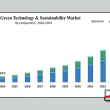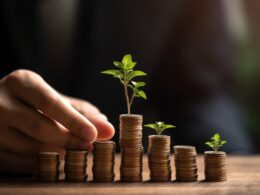The issuance of sustainability-linked bonds (SLBs) has dropped significantly in 2024, raising doubts among bankers and investors about the future of the $319 billion market. So far, $37.6 billion has been raised through SLBs, reflecting a 46% decline compared to 2023, according to Bloomberg Intelligence. The US market has been particularly hard-hit, with no deals recorded this year, driven in part by an ESG backlash and policy headwinds under Donald Trump’s anti-climate agenda.
SLBs, which link bond terms to issuers’ environmental, social, and governance (ESG) targets rather than specific projects, face criticism over greenwashing claims and challenges in tracking sustainability goals. Stricter European regulations and a fading “greenium” discount for borrowers are further diminishing interest in a market that peaked in 2021.
“The market is set for a slow demise,” remarked Xuan Sheng Ou Yong, sustainable fixed-income lead for Asia-Pacific at BNP Paribas Asset Management. “For investors, it’s tough to keep track of performance indicators and how they are being met, while green bonds offer easier due diligence.”
Borrowers using SLBs raised the lowest total since 2020, with the US failing to record any issuances in 2024 after being a relatively active market in previous years. “There isn’t massive demand for this debt type,” said Martijn Hoogerwerf, head of sustainable finance for Asia-Pacific at ING Groep NV. “We’re also not hard pitching it to clients. What are the benefits for an issuer to enter into an SLB? That’s a bit of a question mark.”
Instead, companies are increasingly turning to green bonds and sustainability-linked loans, which involve less market scrutiny. Green bonds, in particular, are on track to hit a record $685 billion in issuance this year, led by the US, contributing to the broader sustainable debt market’s rebound. Overall sustainable debt issuance, including green, social, sustainability, and transition bonds, has surpassed $1.49 trillion this year, breaking a two-year decline.
The decline in SLBs has been steepest in the Americas, with issuance falling by nearly 90%, while Europe, the Middle East, and Africa saw a 30% drop. In contrast, Asia-Pacific experienced a smaller decline of about 8% and surpassed the Americas in issuance for the first time, buoyed by deals such as the Thai government’s $900 million sovereign SLB and local currency issuances in China and Japan.
However, many Asian SLBs feature lenient penalties for missed ESG targets, such as minimal interest rate adjustments or charitable donations, which are harder to track and do not compensate investors. Bloomberg analysis of over 80 Asian SLB deals this year revealed that nearly a quarter allow for charitable donations as penalties, while some are tied to purchasing carbon credits. A majority of the bonds include at least one undisclosed performance indicator, and some feature penalties as low as 1 basis point.
Critics argue that these structures undermine accountability. Some SLBs feature penalty dates late in their term, meaning coupon increases may apply only for a few years. For instance, Thailand’s November SLB ties targets to 2030 emissions goals, with potential penalties kicking in only from June 2036, four years before maturity.
Next year will be pivotal for SLBs, as nearly 100 bonds reach observation dates when lenders evaluate whether ESG targets have been met. “Bankers have become much more careful about what structures we take to the market,” said Atul Jhavar, head of Barclays Plc’s sustainable capital markets business in Asia-Pacific.
High-profile issuers are also facing challenges. Enel SpA, the first company to issue an SLB in 2019, announced in April that it would raise its debt coupons after missing 2023 emissions targets due to Europe’s energy crisis. The move could cost Enel nearly $90 million in additional interest payments.
Despite the challenges, some markets are making inroads. The Philippines saw its first SLB issuance this year by Ayala Land Inc., while Thailand’s sovereign SLB was followed by local currency deals in China and Japan. Still, questions around accountability, greenwashing, and weak penalties may continue to weigh on the market’s credibility and long-term viability.




















